Jason deCaires Taylor creates Underwater Museum of Cannes "to draw more people underwater"
Six large sculptures of fractured human faces form an underwater museum that British sculptor Jason deCaires Taylor has created off the coast of Cannes, France.
The Underwater Museum of Cannes is a permanent installation beside the island of Sainte-Marguerite that is intended to "draw more people underwater" to engage with marine life.
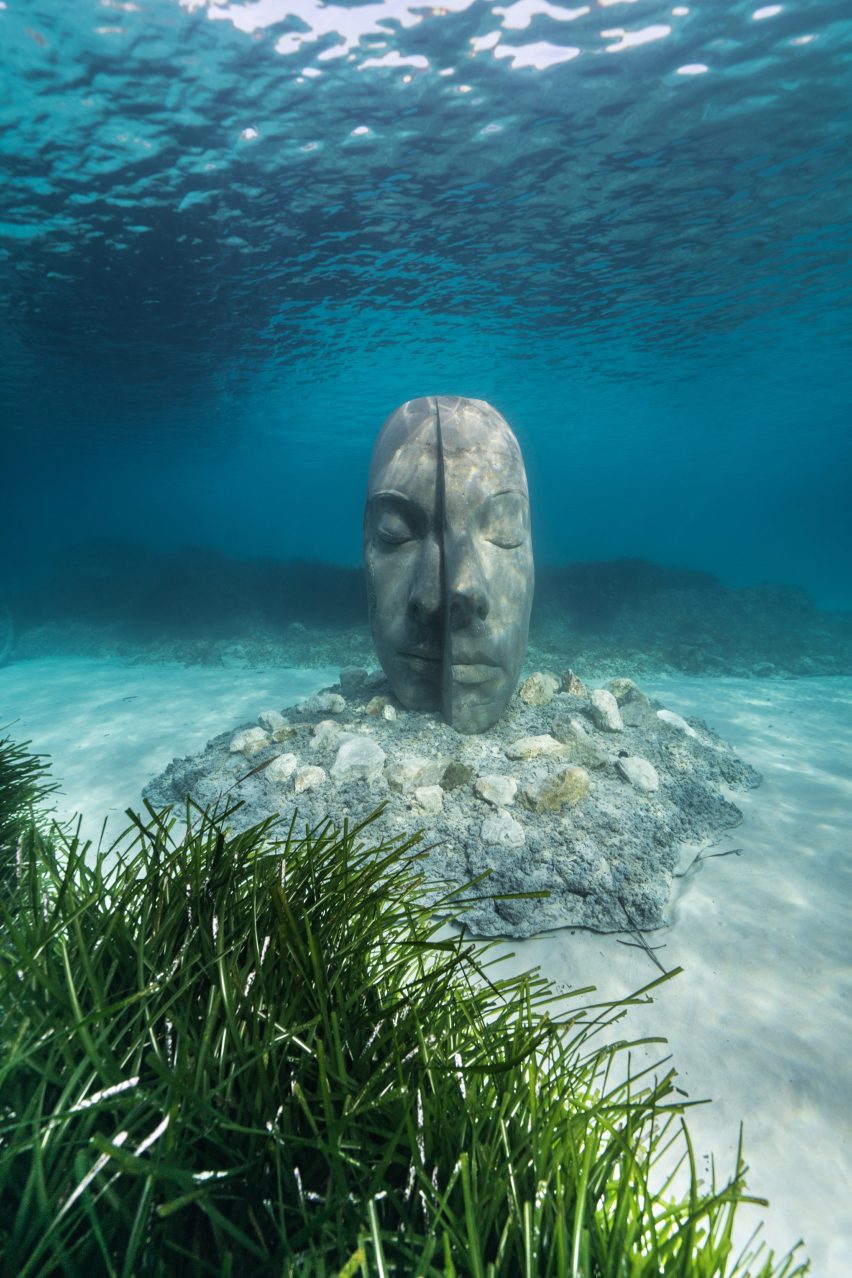
It is designed by deCaires Taylor to be accessible by either snorkelling or diving, positioned two and three metres below sea level.
The goal is that visitors will "foster a sense of care" for marine life and better appreciate its value, while oceans environments are being threatened by human activity.
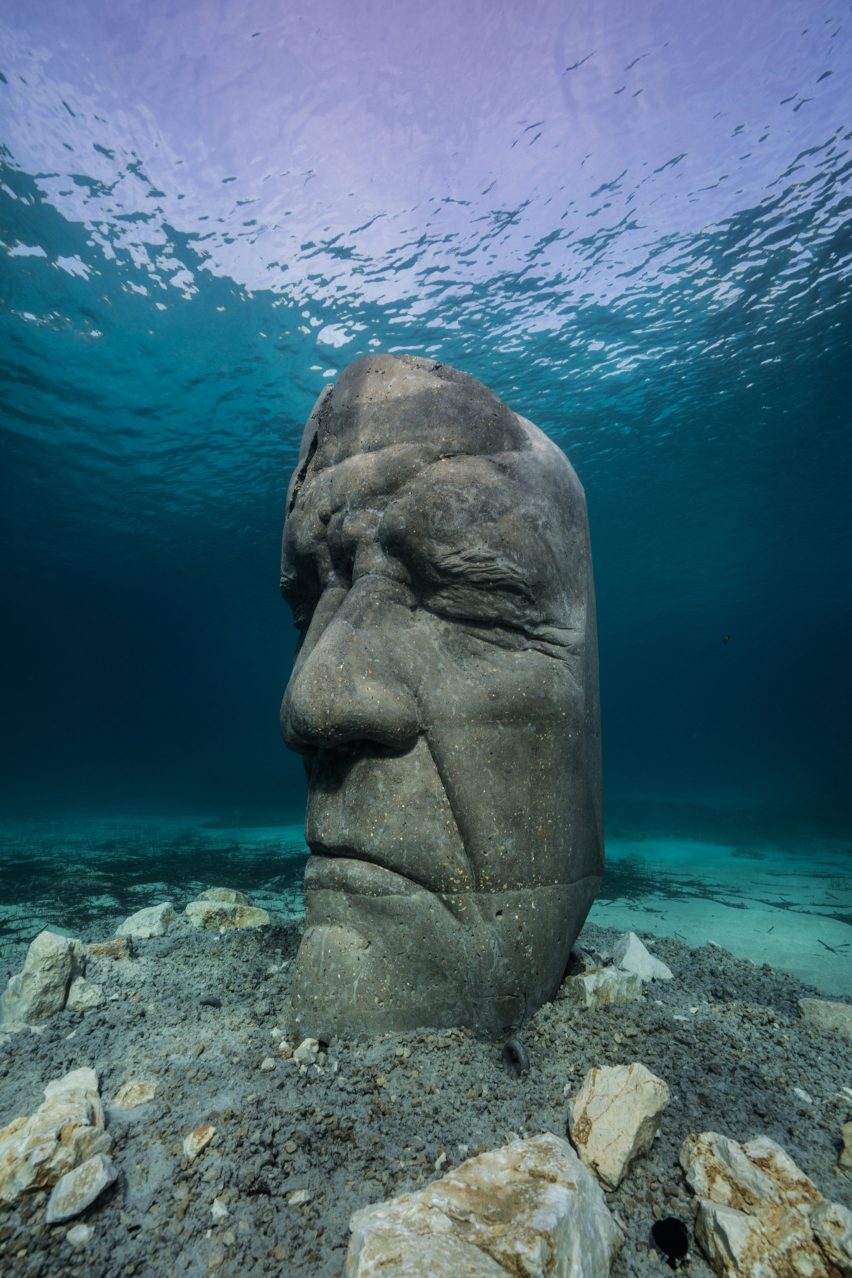
"The main goal was to bring attention to the fact that our oceans need our help," the sculptor told Dezeen.
"Marine ecologies have been decimated by human activity in the Mediterranean over the past few decades and it is not obvious what is taking place when observing the sea from afar," he explained.
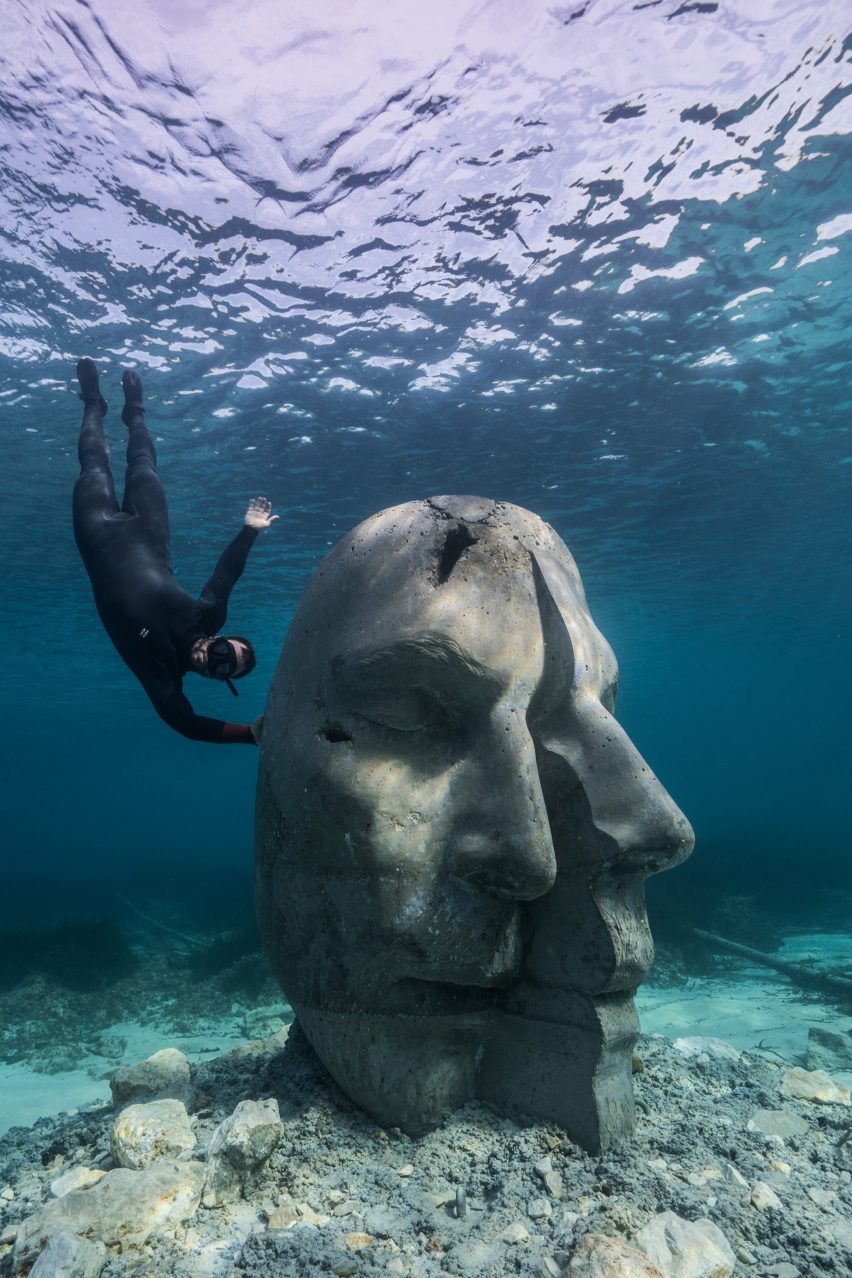
"The idea of creating an underwater museum was to draw more people underwater, to foster a sense of care and protection," added deCaires Taylor.
"If we lived next to a forest or nature reserve where the animals were extracted on an industrial scale and we dumped unwanted waste there would be a public outcry, whereas this is happening every day in our surrounding waters and it largely goes unnoticed."
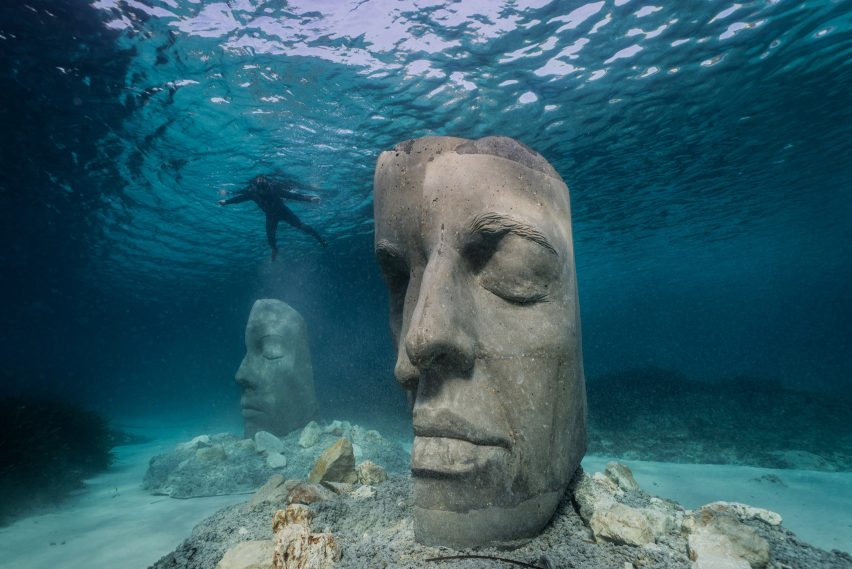
The site of The Underwater Museum of Cannes was chosen for its shallow depth and clear waters that ensure optimal conditions for snorkelling.
However, it also presented the opportunity to alleviate local pollution as, prior to the project, the water was littered with disused marine infrastructure.
"I liked the idea of replacing marine debris with artworks and achieving two goals at the same time," deCaires Taylor said.
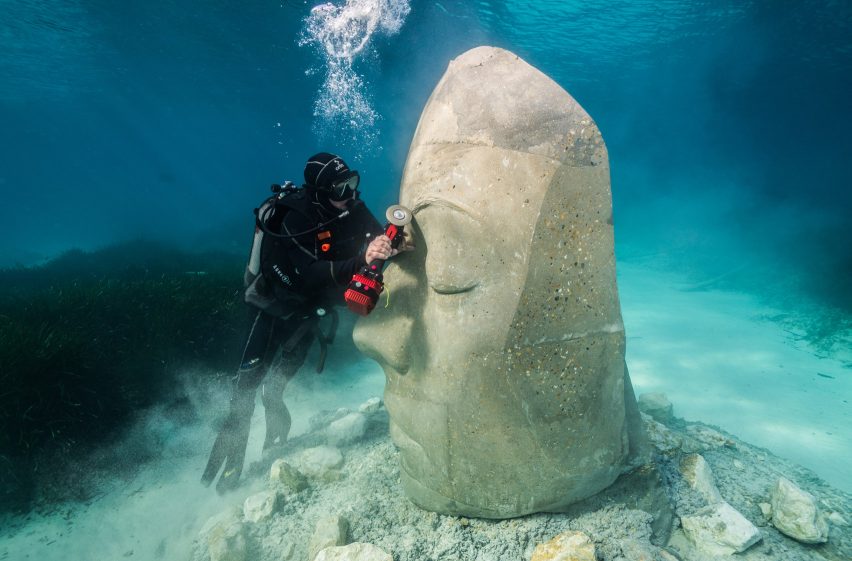
Each sculpture in The Underwater Museum of Cannes' is modelled on the portrait of a local person, including an 80-year-old local fisherman and a nine-year-old girl, to encourage the community to engage with the project.
"Being directly linked to the sculptures encourages communities, and especially members of future generations, to get involved in the protection of our oceans and marine life," explained deCaires Taylor.
All the sculptures, which were made from concrete reinforced internally with rebar, measure over two metres in height and weigh over ten tonnes.
According to the sculptor, the concrete is made of PH-neutral cement and aggregates and has a textured surface designed to attract marine fauna and flora.
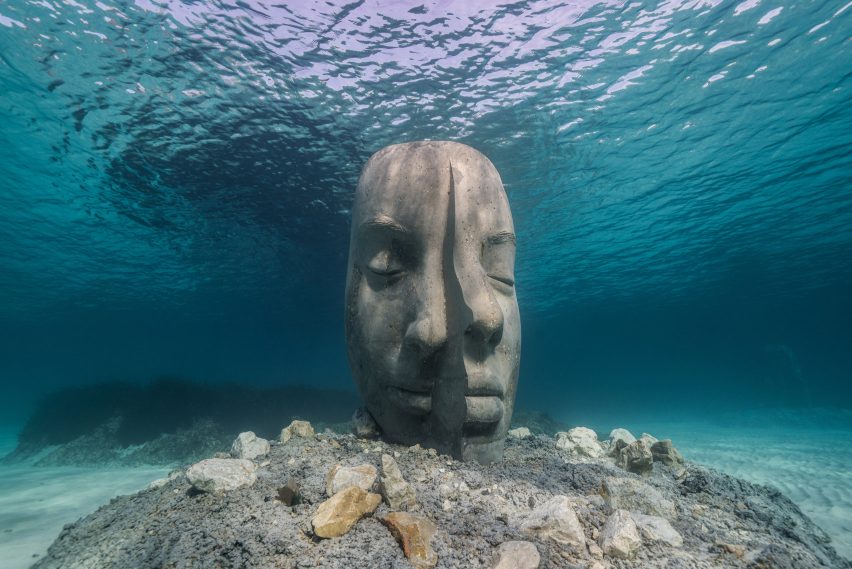
The fragmentation of the faces sees each one divided into two different-sized parts. The larger, outer half is intended to resemble a mask for its smaller counterpart.
This is intended as a metaphor for the current state of the world's oceans, which deCaires Taylor believes is often masked from view.
"The dual portraits of the individual are intended as a metaphor of the ocean; outward-facing they look strong, resilient and indestructible but below the surface they are fragile and in need of protection," he concluded.
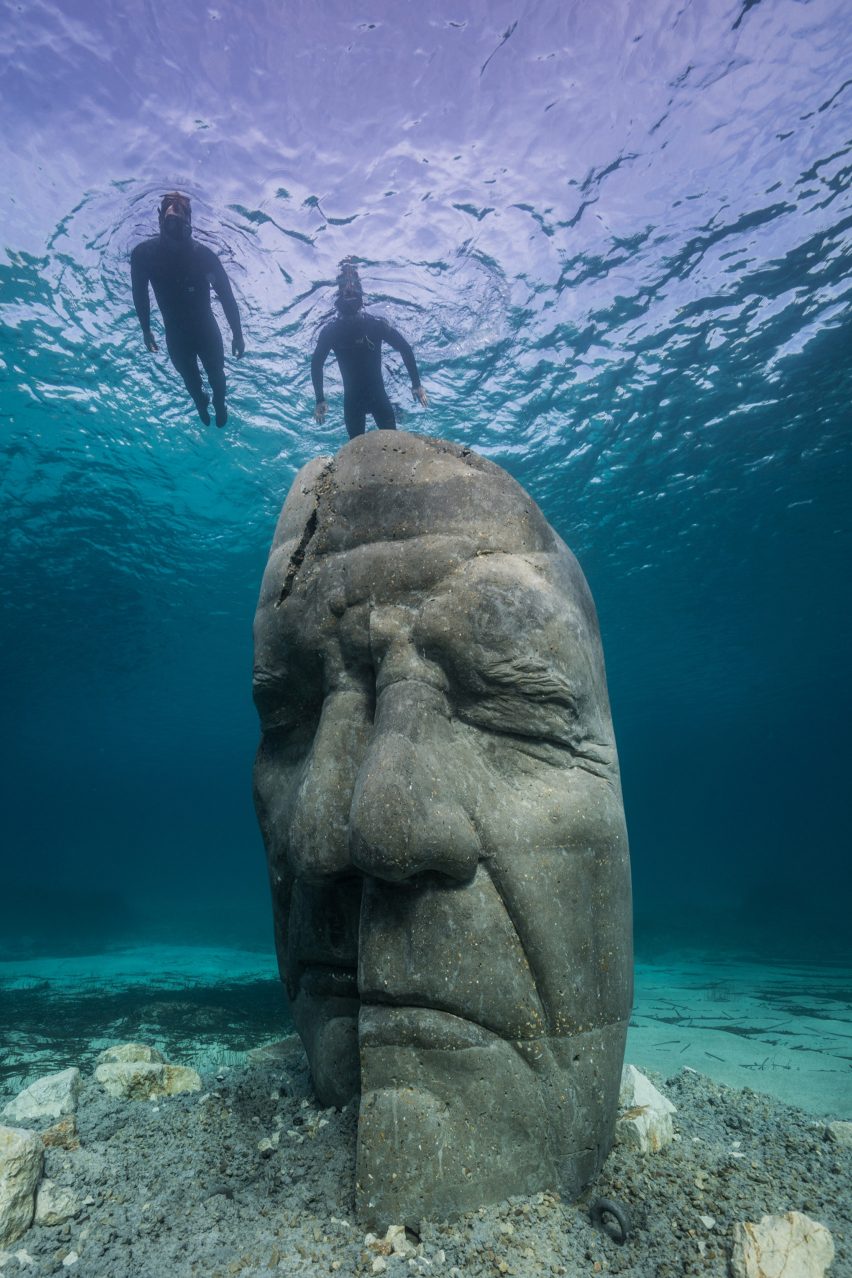
The Underwater Museum of Cannes, which is deCaires Taylor's first installation in the Mediterranean Sea, was developed over four years.
Its completion follows his creation of an underwater greenhouse on the seabed off the coast of Australia as a habitat for marine life.
Doug Aitken is another artist to have dipped his toes in underwater installations, anchoring three mirrored geodesic domes to the seabed near Catalina Island for people to swim inside.
Photography is by Jason deCaires Taylor.